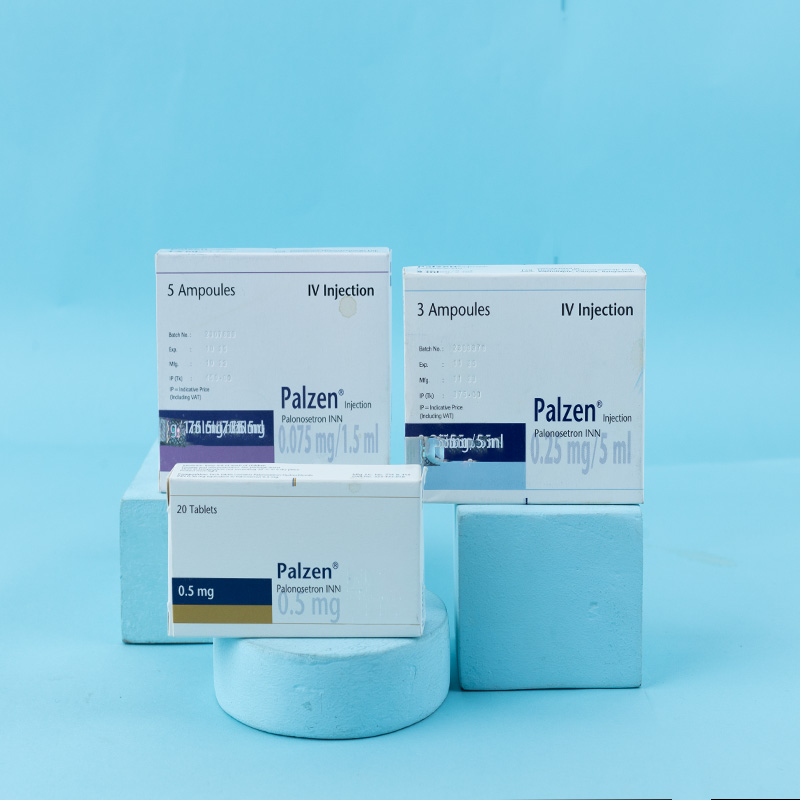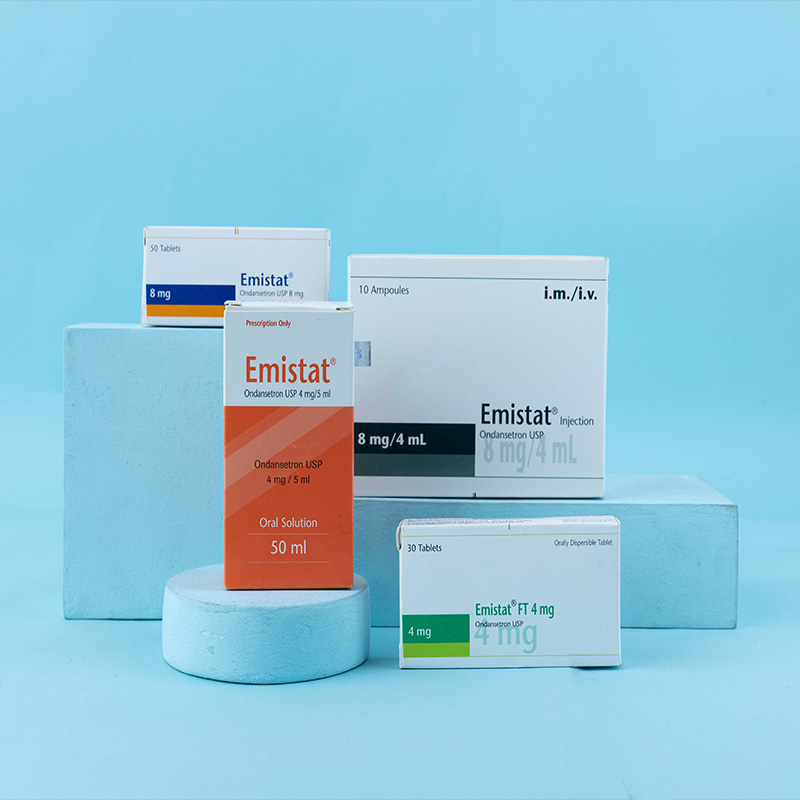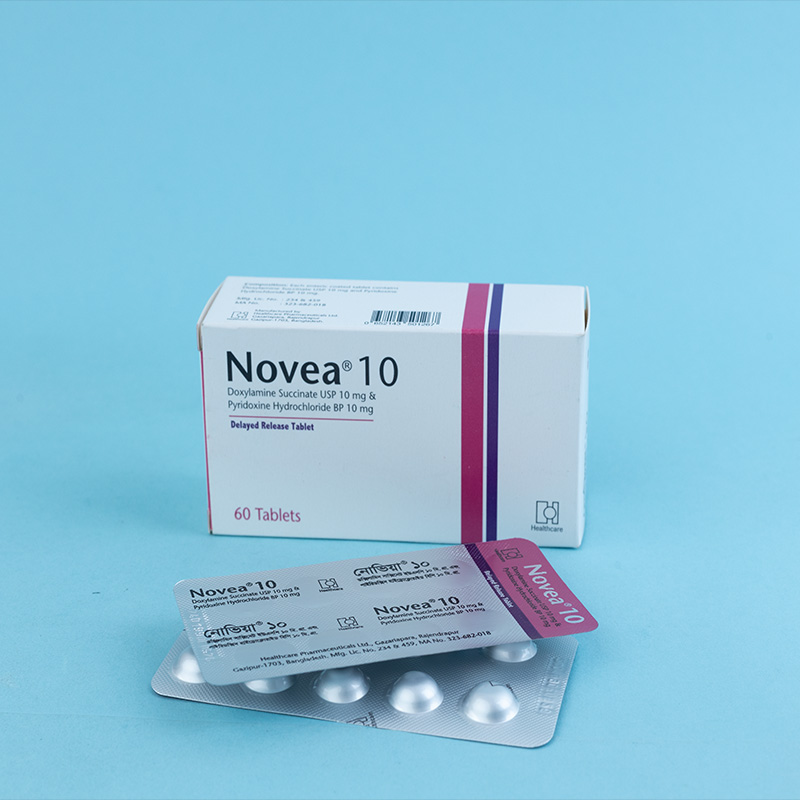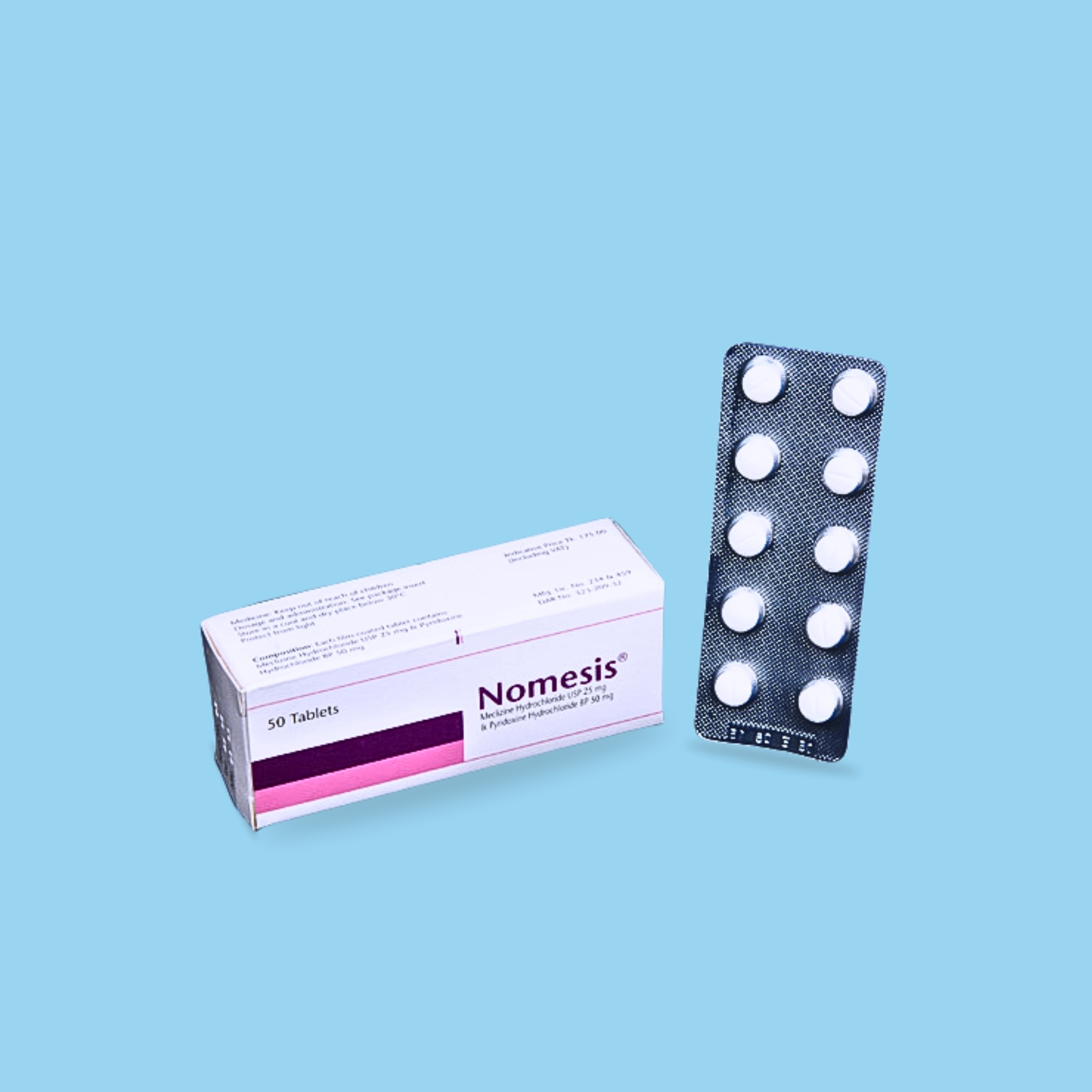Palzen® 1.5 ml i.v. injection: Each ampoule contains Palonosetron Hydrochloride INN 0.084 mg equivalent to Palonosetron 0.075 mg.
Palzen® 5 ml i.v. injection: Each ampoule contains Palonosetron Hydrochloride INN 0.28 mg equivalent to Palonosetron 0.25 mg.
Palzen® Tablet: Each tablet contains Palonosetron Hydrochloride INN 0.56 mg equivalent to Palonosetron 0.5 mg.

Palonosetron is a serotonin subtype 3 (5-HT3) receptor antagonist indicated for:
● Moderately emetogenic cancer chemotherapy - prevention of acute and delayed nausea and vomiting associated with initial and repeat courses.
● Highly emetogenic cancer chemotherapy - prevention of acute nausea and vomiting associated with initial and repeat courses.
● Prevention of postoperative nausea and vomiting (PONV) for up to 24 hours following surgery. Efficacy beyond 24 hours has not been demonstrated. Palonosetron is indicated in pediatric patients aged 1 month to less than 17 years for:
● Prevention of acute nausea and vomiting associated with initial and repeat courses of emetogenic cancer chemotherapy, including highly emetogenic cancer chemotherapy.

|
Chemotherapy-Induced Nausea and Vomiting
|
||
|
Age Group |
Tablet |
Injection |
|
Adult |
A single 0.5 mg Tablet approximately 1 hour before the start of chemotherapy |
A single 0.25 mg I.V. over 30 seconds approximately 30 minutes before the start of chemotherapy |
|
Postoperative Nausea and Vomiting
|
||
|
Age Group |
Tablet |
Injection |
|
Adult |
- |
A single 0.075 mg I.V. over 10 seconds immediately |
|
Pediatric (1 month to |
- |
A single 20 mcg/ kg (max 1.5 mg) I.V. over 15 minutes approximately 30 minutes before the start of chemotherapy |

Pregnancy
Pregnancy Category B
Labor and Delivery
Palonosetron has not been administered to patients undergoing labor and delivery, so its effects on the mother or children unknown.
Nursing Mothers: It is not known whether palonosetron is excreted in human milk. Because of the potential for serious adverse reactions in nursing infants and the potential for tumorigenicity shown for palonosetron in the rat carcinogenicity study, a decision should be made whether to discontinue nursing or to discontinue the drug, taking into account the importance of the drug to the mother.
Pediatric Use
Chemotherapy-Induced Nausea and Vomiting
Pediatric use: Safety and effectiveness in neonates (less than 1 month of age) have not been established.
Postoperative Nausea and Vomiting
Safety and effectiveness in patients below the age of 18 years have not been established.
Geriatric Use
Efficacy in geriatric patients has not been adequately evaluated.
Renal & Hepatic Impairment
Dose adjustment is not necessary in patients with any degree of renal & hepatic impairment.

Contraindicated in patients known to have hypersensitivity to the drug or any of its components.

Hypersensitivity reactions, including anaphylaxis, have been reported with or without known hypersensitivity to other selective 5-HT3 receptor antagonists

The most common adverse reactions in chemotherapy-induced nausea and vomiting (incidence5%) are headache and constipation.
The most common adverse reactions in postoperative nausea and vomiting (incidence2%) are QT prolongation, bradycardia, headache, and constipation.

The potential for clinically significant drug interactions with Palonosetron appears to be low.

Palzen® 1.5 ml: Each box contains 1x5's ampoules in blister pack.
Palzen® 5 ml: Each box contains 1x3's ampoules in blister pack.
Palzen® Tablet: Each box contains 2x10's tablets in blister pack.

Store at temperature not exceeding 30 ºC in a dry place. Protect from light.
Medicine: Keep out of reach of children














